Teaching Volume with Hands-On Activities
By Mary Montero
Share This Post:
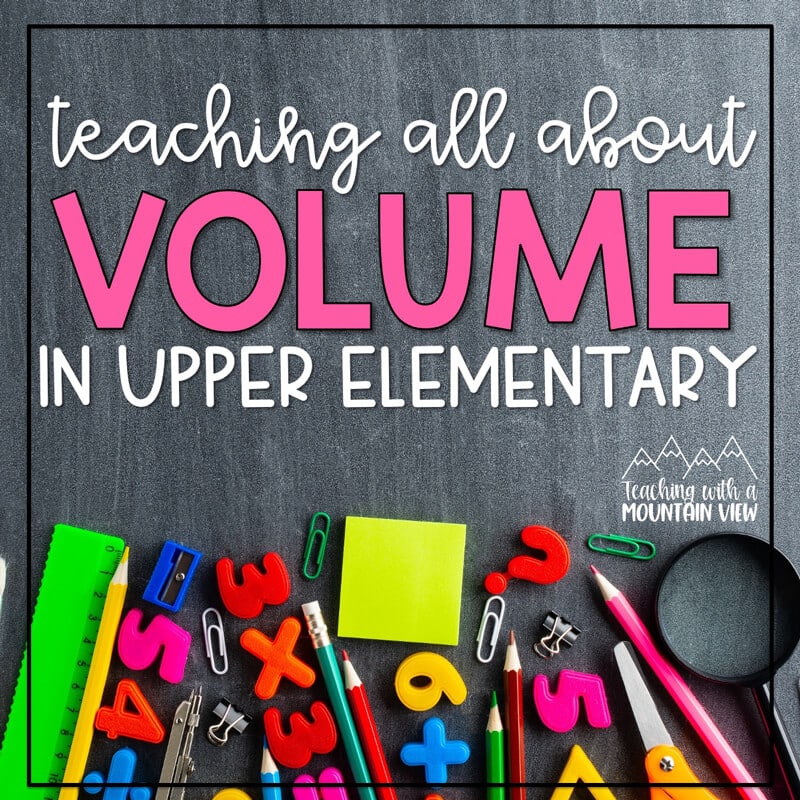
Teaching volume is one of my absolute favorite math units, and I can’t believe I have never written about it before! When I taught 5th grade math, volume always came later in the year when fatigue was starting to set in, so the more hands-on, inquiry-based volume activities I could incorporate, the better!
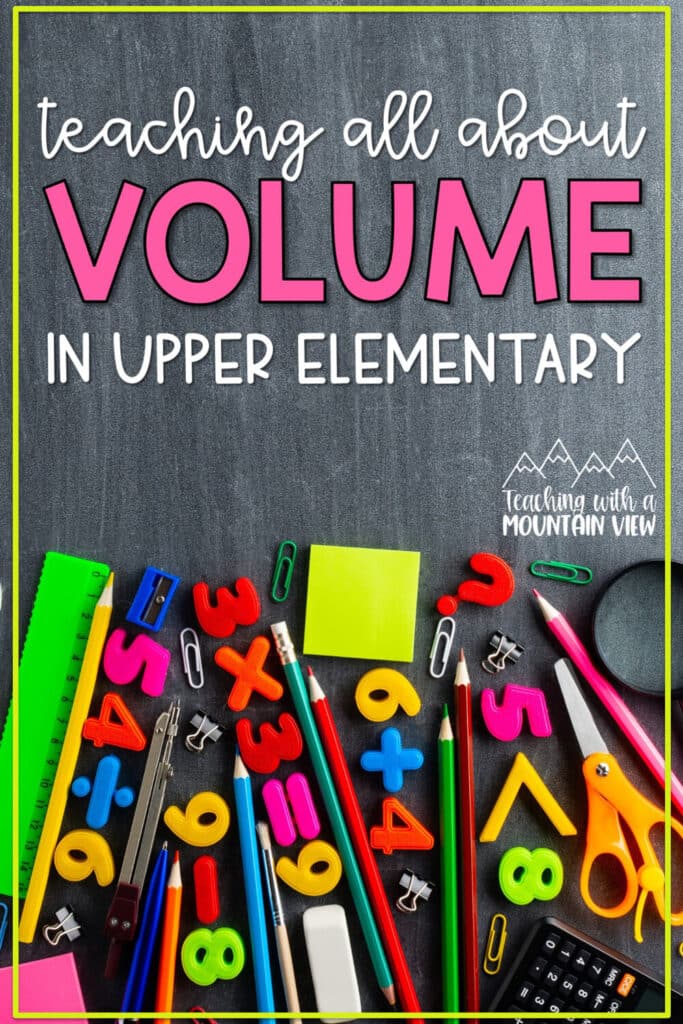
Introducing Volume Hands-On Activity
We start out the unit by discussing the word volume. I simply ask students to tell me what volume means. Of course, they talk about the measure of sound, but then inevitably, someone will say something along the lines of, “a measure of how much something can hold.” I tell them that they are on the right track, but we need to really refine our definition of volume. At this point, I usually give them each a small rectangular prism (this can be anything!). I ask them what the dimensions of the box are, and by this point in the year most students are familiar with the term dimension. Right away, they usually point out the length and height and eventually the width. I explain that we use these measurements to find the volume of rectangular prisms, but we need to figure out how those measurements can help us.
The box dimensions are a bit more abstract, so before telling them anything else, we move on to a more concrete activity. I’ll typically give students unifix cubes or small centimeter cubes and tell them to build a rectangular prism.
Again, I ask them to identify the dimensions of the shape and to write them down. Then, I ask them to count the TOTAL number of cubes in their design. Finally, I ask them how they can use the dimensions to quickly determine the number of cubes in their design. I don’t give them ANY prompting other than that simple question.
This can be tricky for kids, but EVERY year, I have at least a few students who are able to look at their three dimensions along with their total number of cubes and figure out that you must multiply the length by the width by the height to find that number. It’s always so exciting as soon as someone figures it out, and it really starts to cement their understanding.
Teaching Volume Anchor Chart
At this point, we create the following volume anchor chart and interactive notebook activity together. This is more the direct teaching part, but the inquiry and hands-on activities are coming soon!
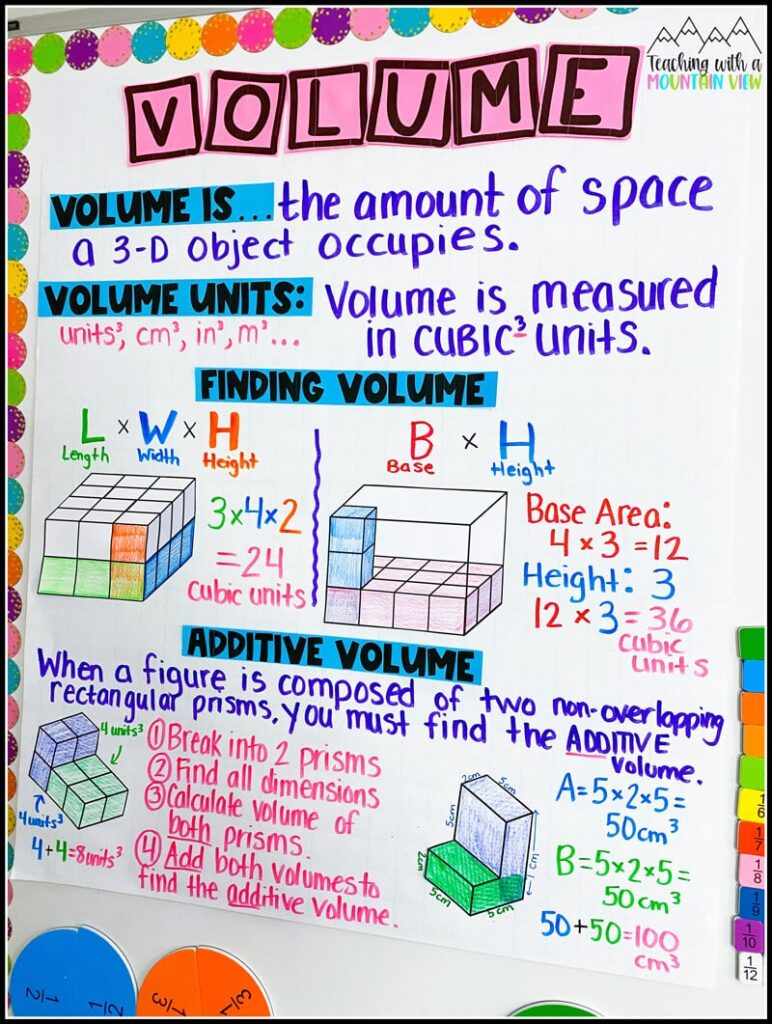
Walking through this lesson and then culminating with the anchor chart gives students a good, basic understanding of the idea of volume, how to find it, why it might be useful to know, etc. But the next few days of volume centers are where the real, deep, conceptual understanding of volume really happens.
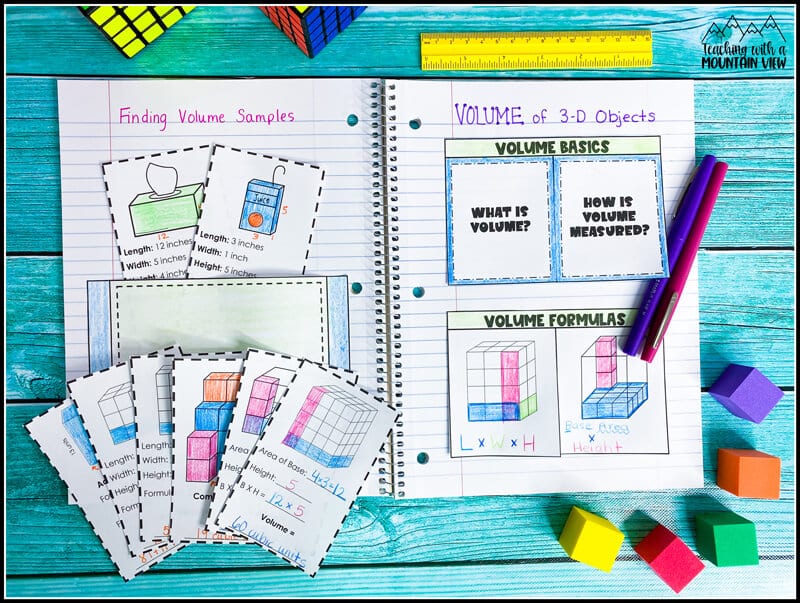
I have students create this notebook after we’ve done the anchor chart together. It shows both ways that I teach students to find volume, the definition, the units, etc. On the left hand side, there are 10 different volume “practice” cards that show them a wide variety of volume scenarios.
Volume Math Project
Then bring volume practice to life with this engaging Stocking the Superstore Volume Math Project—a real-world, critical thinking project designed to challenge and excite students as they become the proud owners of their very own superstore!
Students will begin by designing their store name, logo, and slogan, and creating a store owner badge, sparking creativity and ownership from the start. Students will practice volume with varying tasks while designing and arranging all aspects of a superstore. This project works in virtually any classroom: you can use a few of the pages or complete the entire 10-page project, depending on how much time you have!
This project is NO PREP, just PRINT these volume math activities for a ready-to-go project.
Volume Centers
We complete the following volume centers over the course of two or three days. While they are working on these centers, I am pulling small groups and working on a variety of skills with them, namely additive volume. We typically do the Dice Dilemma together because some of the boxes will end up having decimals in their dimensions, so we will need to explicitly discuss how that works with cubic volume.

The first two centers are more basic review and hands-on activities. You can do these as a whole class or combine them into one center together, as they take a bit less time than the rest of the centers. The vast majority of materials can already be found in your classroom, but I have also linked the specific boxes used via my Amazon Affiliate link HERE. These can all be used over and over again!
Sugar Cube Conundrum: In this volume inquiry activity, students look at the way the sugar cubes (a non-standard measure) are arranged perfectly in the box to find the area of the box. Then they measure the box to find the volume using standard measure and compare the volumes. This leads to great discussion about different units for finding volume. This activity is best done with more than one sugar cube box size, but if you can only find one, that’s totally fine!
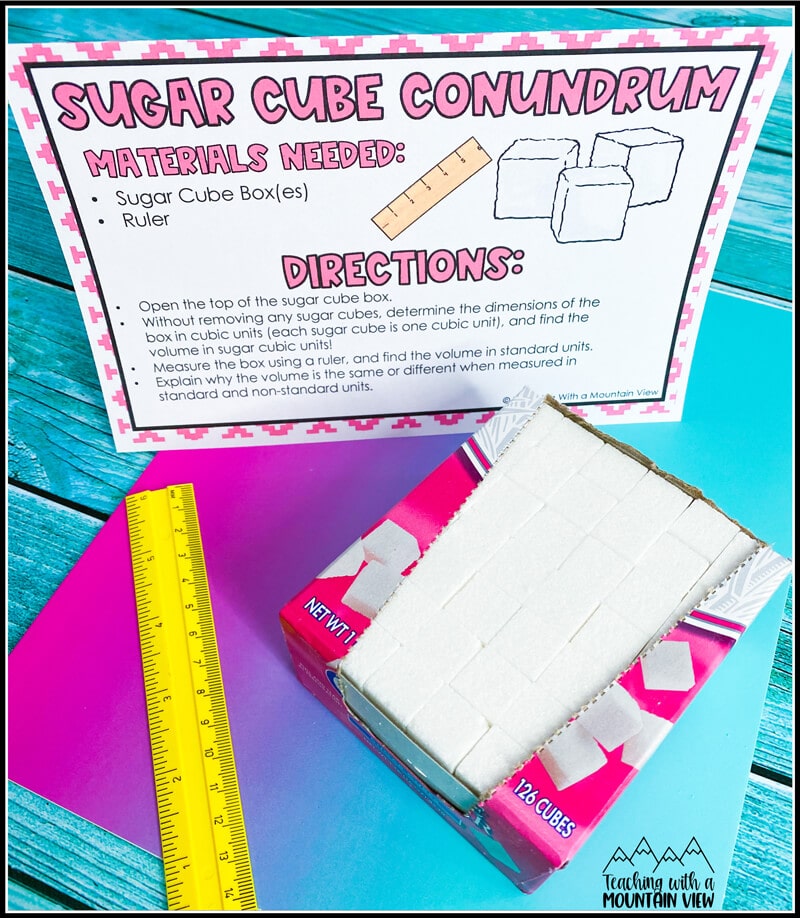
Can You Cube It?: I truly consider this one a MUST-DO volume activity. It requires students to physically fill an empty box with 1” cubes that fill it perfectly, dump it out and recreate the same shape again. This is usually the activity that cements the concept of volume for my students.
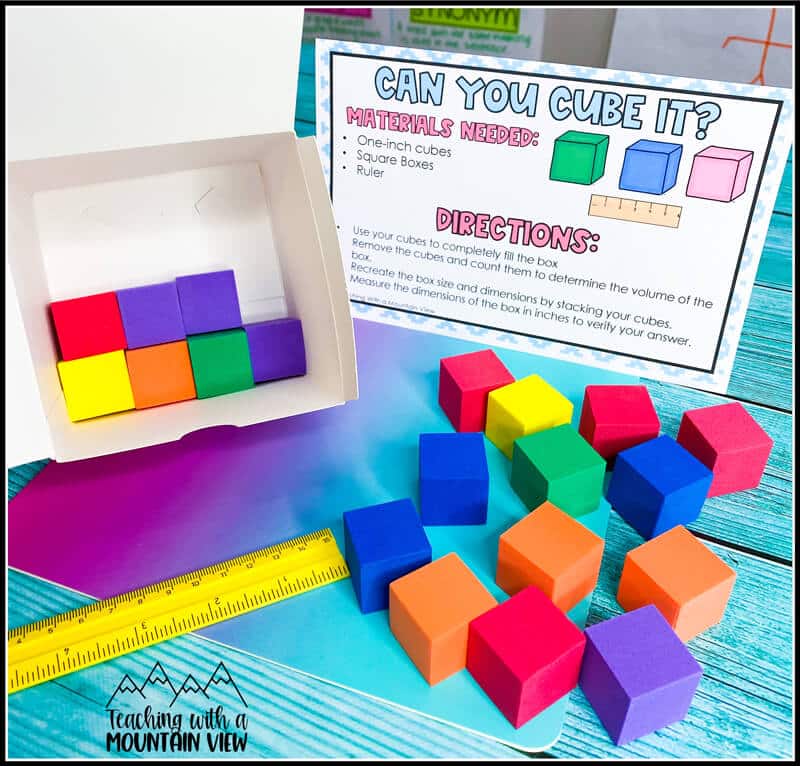
Cool Cube Capers: If you don’t have Rubik’s cubes, you can find a wide variety of pictures of different sized cubes online to complete this activity! You will need pictures and/or models of a wide variety of cubes, but students tend to love this one!
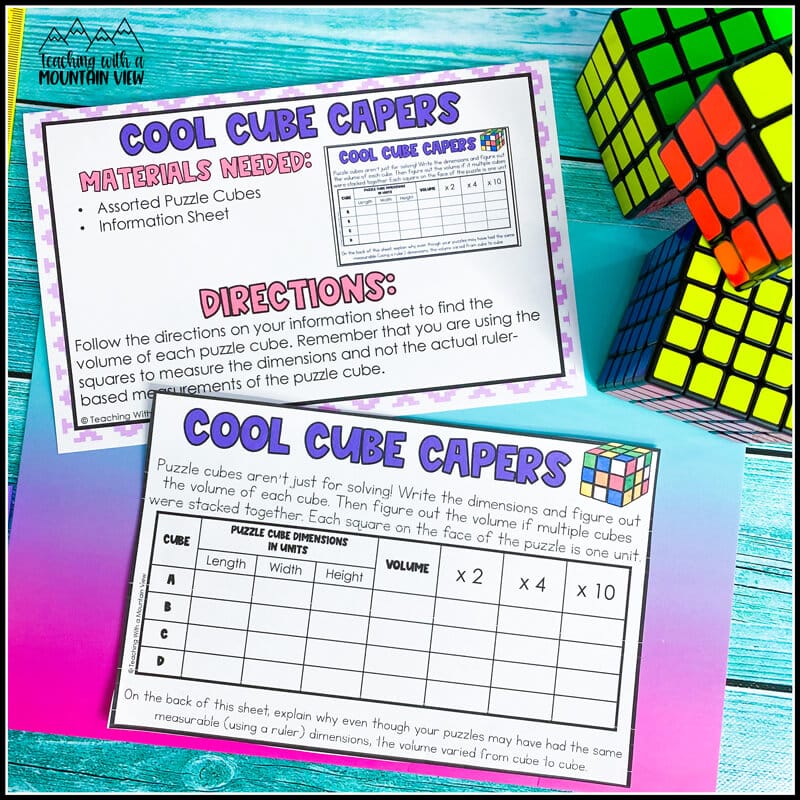
Base Ten Block Challenge: This activity is slightly more involved, but all they need is some base ten blocks and the assignment sheet. This one really focuses on selecting which size box will fit an item of a certain volume, so it makes them think about volume a little bit differently.
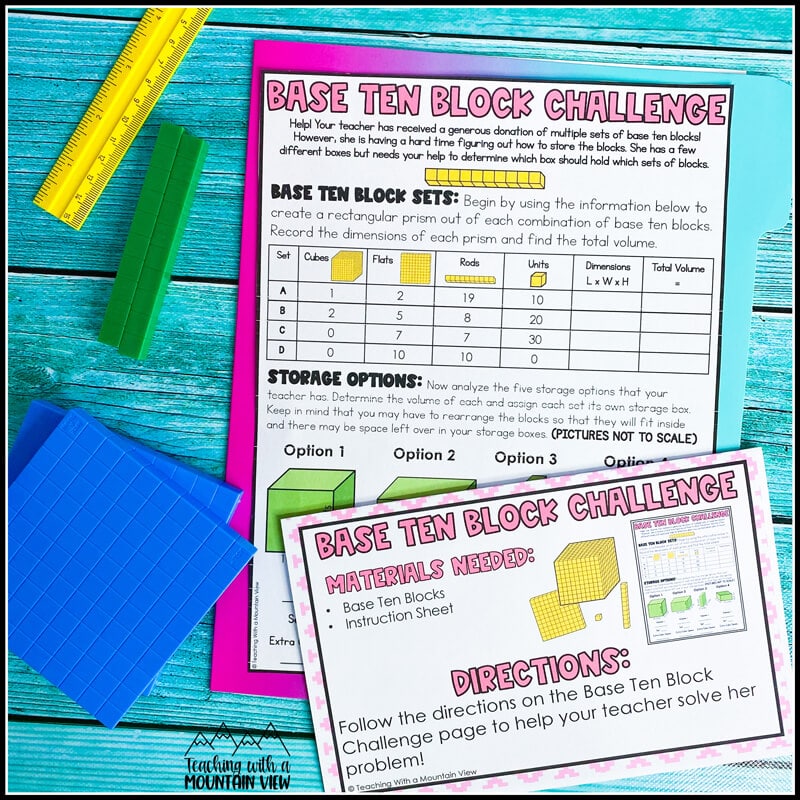
The Dice Dilemma: The Dice Dilemma Volume Activity finds students stuffing boxes full of dice. Don’t worry! They don’t actually do that, but they DO use their measurement skills to measure out a wide variety of box sizes and determine which size would be best to fit their dice. I particularly like this activity because some of the boxes have decimal/fraction measures, which means not all of their dice will fit perfectly. It presents them with a new challenge they have to figure out! You very likely have all the boxes you need for this one at home– just grab a few shirt boxes that you save for the holidays. 🙂
Under the Sea with Unifix Cubes: Using Unifix Cubes to teach volume is an oldie, but a goodie, as they say! In this variation of it, I have scaled down standard aquarium sizes and students are tasked with making miniature aquarium models based on the units. This activity also challenges them to find different shapes with the same volume.
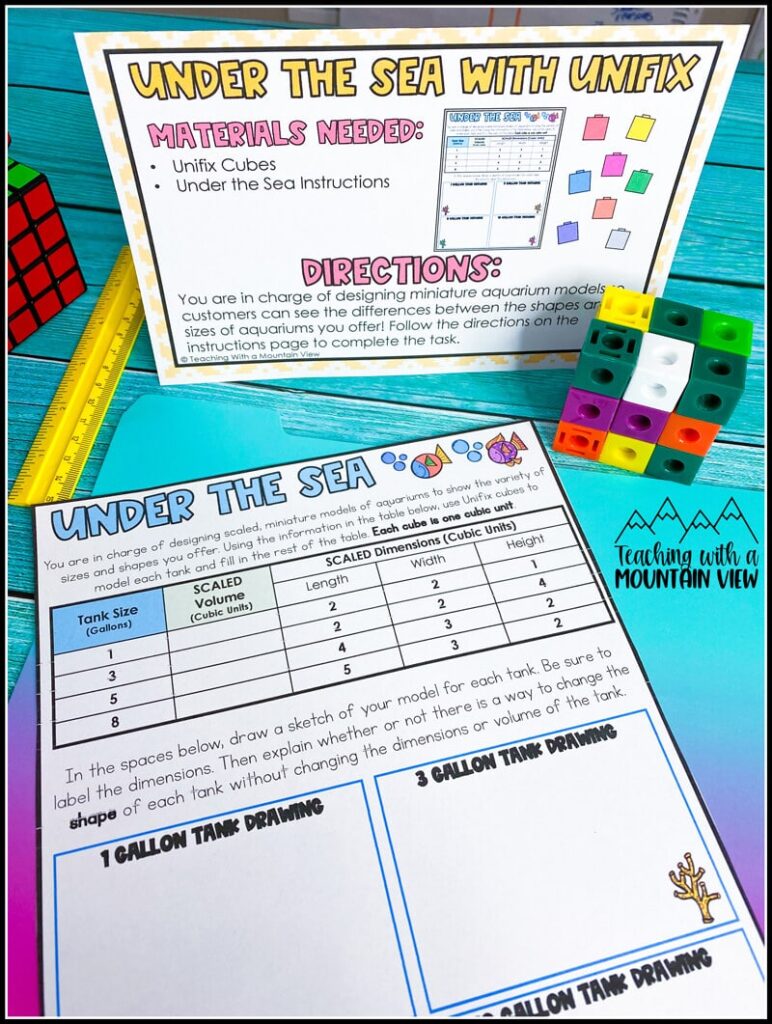
Volume Task Cards: I may be the world’s biggest fan of task cards! When I began implementing them in my classroom many years ago, I saw what a major factor they were in student engagement. For this set, I recommend using a game to go along with them. Something simple like Candy Land or Chutes and Ladders is RIDICULOUSLY engaging, even for 5th graders! You can also use a game like Jenga. Students set up the game, and in order to earn their turn, they have to complete a task card. Here’s the catch– everyone in the group ALSO has to complete the card at the same time and compare/check answers. That keeps everyone working the whole entire time but still adds an element of fun to the equation! You can purchase the task cards HERE.
Volume Error Analysis: I have blogged a lot about the benefits of error analysis and how I teach students to analyze errors. That means error analysis has really become a staple in my classroom instruction. It requires students to go above and beyond in displaying their understanding of a concept. I usually have students complete these with a partner. You can purchase the error analysis tasks HERE.
Free Volume Cumulative Activities
Once they have all been through the centers, we do a little bit more pencil and paper practice. I have created a FREE set of volume printables (and digitals!) for you to use as a review. Between this, the error analysis, and the task cards, most of my students show nearly complete mastery with this skill by the end of the week and we are ready to move on to more in-depth volume practice!
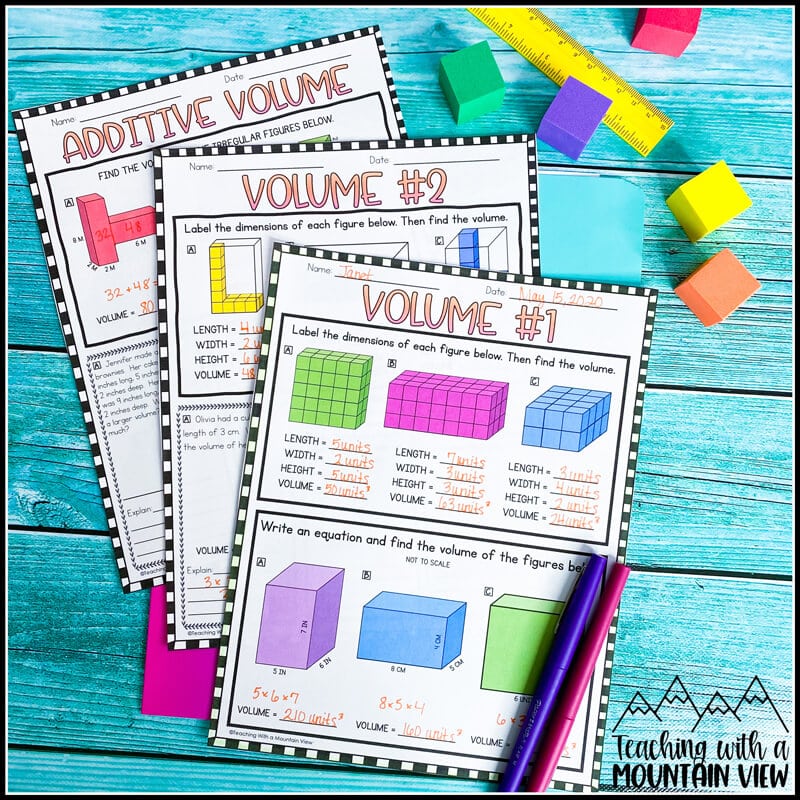
Now here’s your chance to grab almost EVERYTHING you need for teaching volume for FREE! Enter your email below to have the centers, anchor chart elements, interactive notebook elements, and free printables sent directly to your inbox.
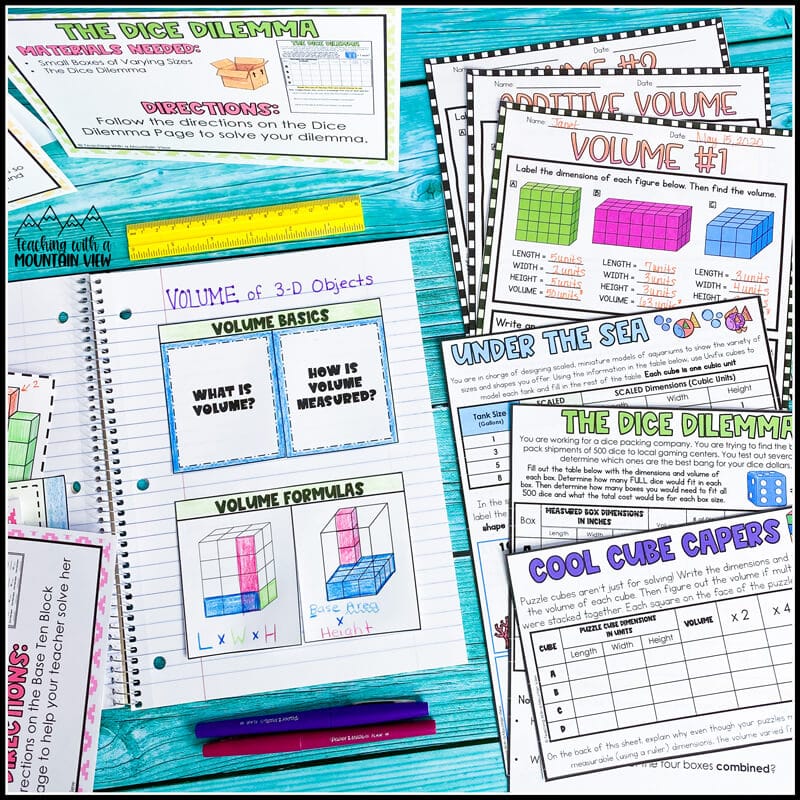
That’s it! I’d love to hear your ideas for teaching volume. Hop on over to my thriving Facebook Group, Inspired in Upper Elementary, to tell us how YOU teach volume or get even more ideas for teaching tricky math standards!
Have a wonderful day.
Mary Montero
I’m so glad you are here. I’m a current gifted and talented teacher in a small town in Colorado, and I’ve been in education since 2009. My passion (other than my family and cookies) is for making teachers’ lives easier and classrooms more engaging.







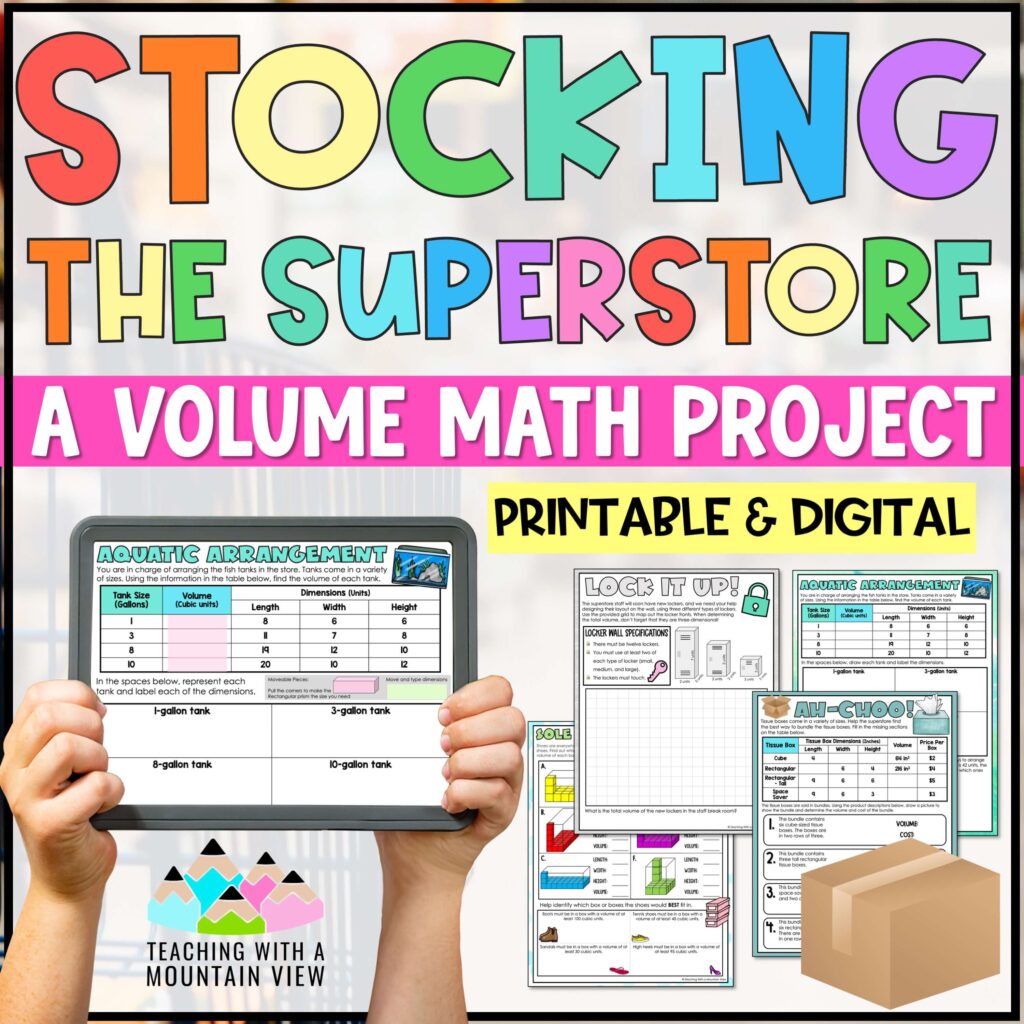
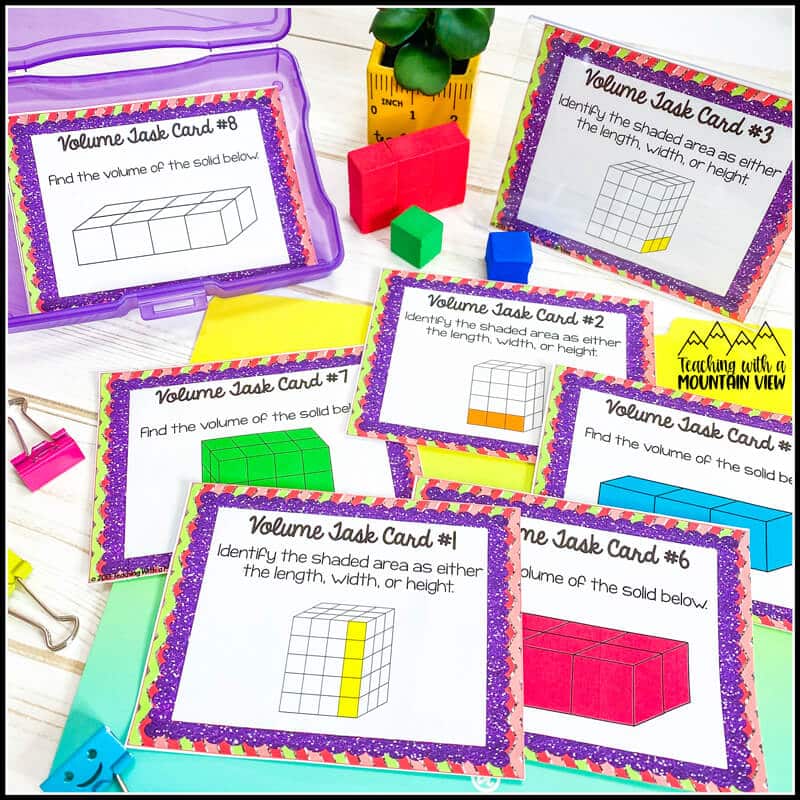
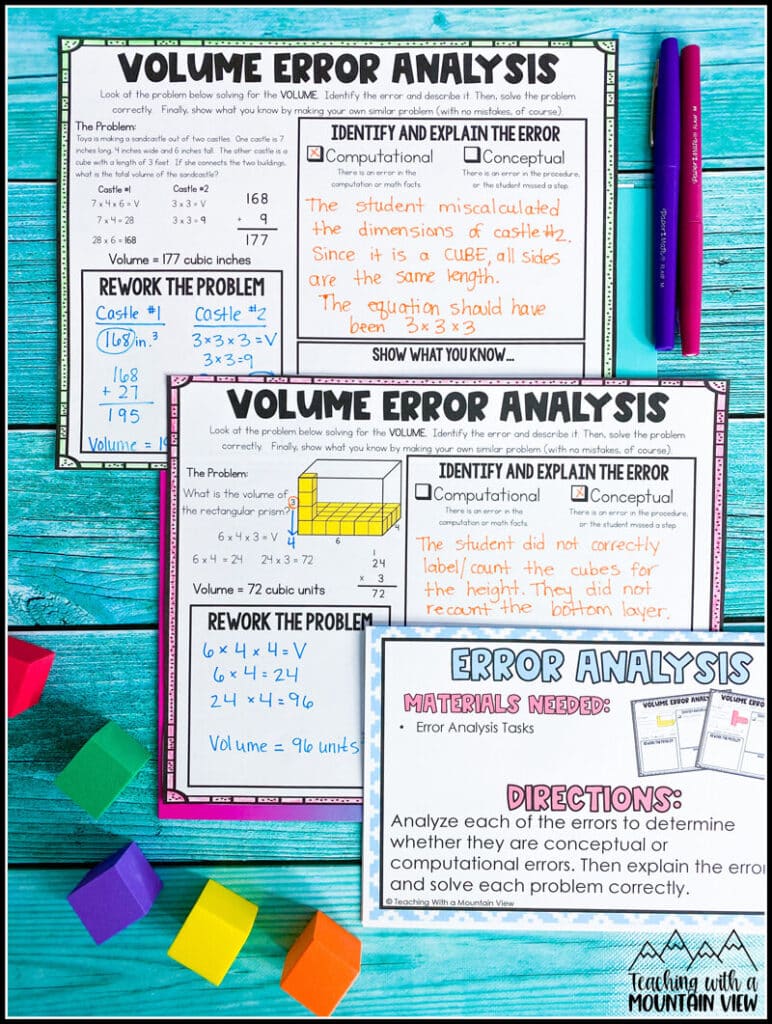





Thank you!